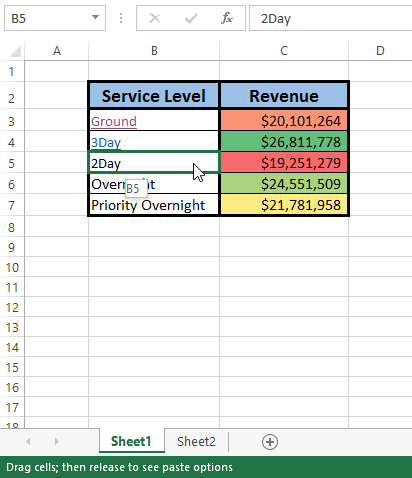5 Ways to Hyperlink Cells in Excel Sheets Instantly

In Excel, the ability to hyperlink cells provides users with the functionality to connect data points seamlessly, making navigation between various sheets or external resources quick and efficient. Whether you're compiling a comprehensive report, managing a project, or simply organizing personal information, hyperlinking cells can dramatically improve your data interaction experience. Here are five effective ways to create hyperlinks in Excel sheets instantly.
1. Hyperlink Using the Ribbon Interface

The Ribbon interface in Microsoft Excel provides a straightforward method to add hyperlinks:
- Select the cell where you want to insert the hyperlink.
- Go to the Insert tab on the Ribbon.
- Click on the Hyperlink button, or press CTRL+K.
- In the Insert Hyperlink dialog box, you can choose between:
- Linking to an existing file or web page: Enter the URL or file path.
- Linking to a location within the current workbook: Select a cell, range, or named object.
- Linking to an email address: Specify the email address and subject.
- Click OK to apply the hyperlink.
🔗 Note: Hyperlinks can be edited or removed by right-clicking the cell and selecting Edit Hyperlink or Remove Hyperlink.
2. Use Excel Functions

Excel provides functions to create hyperlinks dynamically:
- =HYPERLINK(link_location, [friendly_name]): This function allows you to create a link within a cell. For example:
=HYPERLINK(“A2”, “Go to A2”)These functions are particularly useful when you need to change the link target or display text dynamically based on cell content or user interaction.
🌐 Note: When using Excel functions for hyperlinks, ensure that the link paths or names are correctly formatted to avoid errors.
3. Hyperlink to Specific Range

Creating a link to a specific range or named range within a workbook can simplify navigation:
- Define a range or give a name to the cells you want to link to.
- Use the Insert Hyperlink dialog or the
=HYPERLINK()function to point to this range:
=HYPERLINK(“#‘Sheet2’!A1:B2”, “Jump to Data”)4. Hyperlink with Images

Excel allows you to hyperlink images, making your spreadsheets more interactive:
- Insert an image onto your sheet by selecting Insert > Picture.
- Right-click the image, choose Hyperlink, and link it to:
- A cell in the same worksheet.
- Another worksheet or workbook.
- An external webpage or file.
5. Using VBA for Advanced Hyperlinking

For users comfortable with VBA (Visual Basic for Applications), you can automate hyperlink creation or customize links further:
- Open the VBA editor by pressing ALT+F11.
- In a new module, you can write a script to create or modify hyperlinks. Here’s a simple example:
Sub AddHyperlink()
‘Add hyperlink to cell A1 of Sheet1
With ActiveSheet.Hyperlinks.Add(Anchor:=Range(“A1”), Address:=“”, SubAddress:=“Sheet1!A1”, TextToDisplay:=“Jump to Sheet1”)
End With
End SubThis approach allows for dynamic hyperlink creation based on complex conditions or user interactions.
🔧 Note: VBA scripting offers powerful control but requires understanding of the Excel Object Model.
To sum up, hyperlinks in Excel are not just a convenient navigation tool; they are a gateway to interconnectivity within and beyond your spreadsheets. Whether you're a beginner or an advanced user, mastering the different methods of hyperlink creation can significantly streamline your workflow, allowing for a more interactive and efficient data management experience.
Can I hyperlink to external files or web pages?

+
Yes, Excel supports hyperlinks to external files, web pages, and even email addresses. Just use the appropriate path or URL when setting up the hyperlink.
What happens if the file or page I linked to is moved or deleted?

+
If the linked file or page is moved or deleted, Excel will display an error when you try to activate the hyperlink. Make sure to update your hyperlinks periodically to avoid this issue.
How can I test hyperlinks in Excel before sharing the workbook?

+
You can test hyperlinks by simply clicking on them. Excel will indicate if the link is valid or show an error if it’s broken. Additionally, you can use VBA scripts to check for broken links in bulk.